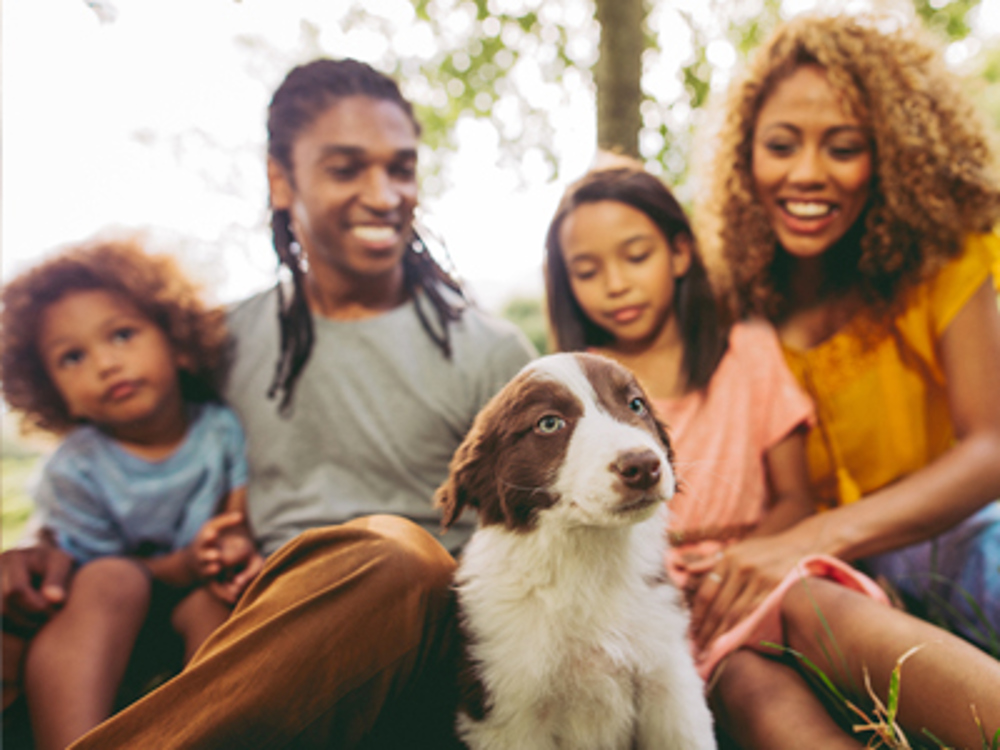
Taking care of a dog is an excellent way of teaching a child to take responsibility, express empathy, get some exercise and to have fun. Dogs can also significantly help to raise children's self-esteem.
But it is the responsibility of adults, especially parents, to make sure that these valuable child/dog relationships are nurtured and that everyone is happy living together. When introducing either a new puppy or a new baby into the family, it is important to follow the steps below to make sure there are no issues.
Playing with your puppy
Most dog biting incidents happen in the home, however with these simple steps we can avoid any problems.
- Never let children ambush or force themselves on the puppy. If they want to play, the puppy should be invited over, but if the puppy doesn't want to go to them, do not let the children force the issue. Children should be made to understand the importance of having 'quiet time' with the puppy, and to give it space, peace and quiet when the puppy needs time out
- Toddlers and young children often unwittingly encourage puppies to chase and play bite them, so you should only let them interact under your supervision. Keep them apart (use a child-gate or playpen) if one or the other is over-excited, and never leave them alone together
- However, even older children (and some adults!) can be excitable and inconsistent with puppies, over-stimulating the puppy one minute, and then telling it off the next. Children (and puppies) are not known for their patience, so both need to be taught how to be gentle with each other
Interacting with your puppy and other dogs
- Your children should be taught that the puppy is not a toy or doll, and should not be disturbed when resting or sleeping, nor should it be picked up too frequently as this can make it grumpy and snappy
- Most puppies dislike close face-to-face contact, unless they have instigated it themselves, so keep faces away from the puppy's face
Always remember:
- Children have to be 10 years old or over to be legally responsible for a dog outside their homes
- When interacting with other dogs, children should learn to ask the dog's owner permission before petting their dog
Introducing your baby into the family
The introduction of a new family member can be a baffling time for your dog but there are a number of steps that you can take, both before the arrival of your new baby, and when you bring them home, which will help to ease the transition and ensure the relationship is a happy and safe one.
Before the baby arrives
- Make sure that your dog is well trained - they should know to not jump up and should respond to basic obedience commands such as 'sit', 'stay' and 'come', whilst also knowing and understanding the word 'no'. If your dog has not mastered basic obedience, The Kennel Club Good Citizen Dog Training scheme runs training classes throughout the country. If you dog has behavioural issues, seek training advice from The Kennel Club Accredited Instructors
- Get your dog accustomed to the new routine they will experience when the baby arrives. This might mean getting them used to being alone for short periods of time while you are in another room or out of the house
- Get your dog used to unfamiliar objects that will come with the baby's arrival. This may include getting your dog used to walking well next to a pram, and seeing the cot and playpen. It's also important that your dog realises that the baby's toys don't belong to them
- If there are areas of the house that will be out of bounds when the baby arrives, put this in place long before you bring baby home. You don't want your dog associating the baby's arrival with the removal of privileges that they used to enjoy
- Ensure that your dog's worming, vaccinations and flea treatments are all up to date
When baby arrives
- When bringing the baby home from hospital, mum should greet the dog first as they will be delighted to see her after she's been away, while the baby is bought in calmly afterwards
- Include, don't exclude. Reward your dog for approaching the baby calmly and gently. Don't shout at him for getting it wrong or for trying to get your attention. Gently show your dog the right way to behave
- Teach your dog to stay behind a baby gate or in a crate, encouraging them with treats and praise. This will keep them away from the baby but they will still be able to see what is going on. If you can teach this before the baby arrives that will make the transition much easier
- Keep your dog busy with interactive toys like a stuffed Kong while you are busy with the baby
- Your dog will still need plenty of exercise and interaction to stop them getting bored and frustrated
- Never, ever leave dog and baby alone together
- As the baby grows, it is important for them to know how to behave around dogs.
